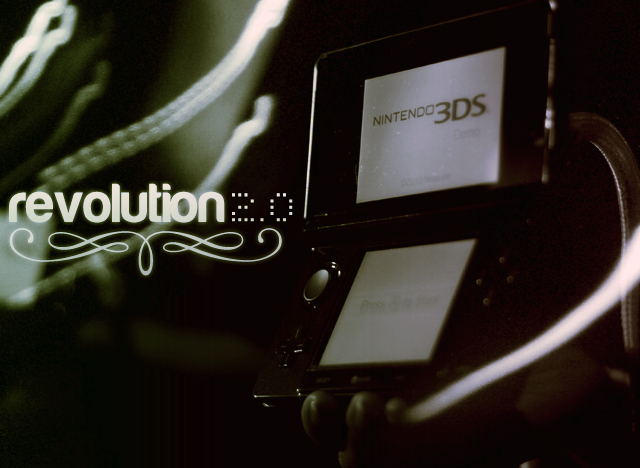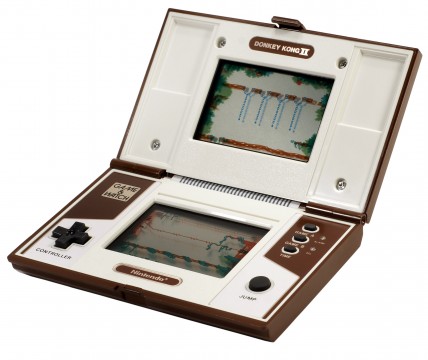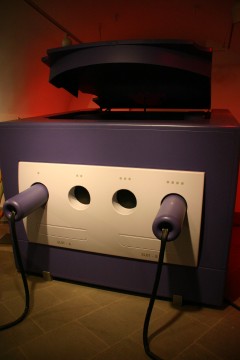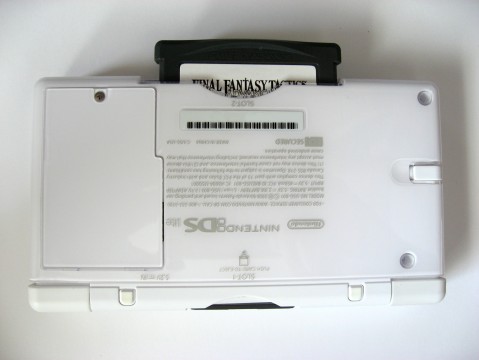
In 1980, thanks to the machinations of a 39-year-old toy designer named Gunpei Yokoi, Nintendo released its first handheld electronic game system– actually a dual-screened, oddly clunky watch that somehow doubled as an electronic game. These games were anything but complicated, named things like “Ball” or “Chef”. And yet these wildly popular Game & Watch devices blazed a trail for myriad imitators and competitors, from upstarts like Tiger Electronics to juggernauts like Mattel. Yokoi’s inventions succeeded not in spite of, but because of their simplicity; with even companies like Disney looking to Nintendo to make games based on their characters, and companies like the Soviet Elektronika trying to clone Yokoi’s magical devices, Nintendo’s handheld success seemed to catch everybody off-guard.

Of course, even in 1980, Nintendo was no stranger to the electronic game business. It had already released sundry Color TV Games– each containing variations on the same rudimentary game –and in 1975, Genyo Takeda, Nintendo’s first video game designer, had already created Nintendo’s first arcade game, EVR Race. Following Takeda’s lead, a 25-year-old student developer named Shigeru Miyamoto had arrived at the scene, where nine years later, he would have already designed some of the most well-known games of all time. It’s probably safe to argue that Takeda kick-started Nintendo’s recipe for video game goodness, Yokoi threw in that little pinch of innovation, and Miyamoto finished off the masterpiece with his own, hitherto unseen, brand of insanity. If the success of the Nintendo Entertainment System is any indication, the three men had created a recipe that worked– great game design with as many twists as a, well, Nintendo game.
This revolution worked well in Nintendo’s favor– and took over more than just the video game industry, in fact. In his 1993 book Game Over: Press Start to Continue, David Sheff discusses:
Nintendo had completely blindsided the American computer industry, too. The founders of the personal-computer revolution had predicted in the early eighties that computers would soon be commonplace in most homes, like toasters. Yet a decade after the personal computer was launched, only 24 million American homes had them–almost 10 million fewer than had Nintendo systems. Worldwide, there were about an equal number of Nintendo systems and PCs, some 50 to 60 million. As with VCRs, the PCs were manufactured by dozens of companies; less than 10 percent were made by the number-one PC company, IBM. […] [J]ust one company manufactured and sold all the Nintendo systems. […] When Apple Computer president Michael Spindler was asked in March 1991 which computer company Apple feared most in the 1990s, he answered, “Nintendo.”
Sheff, from his outsider’s perspective, continues to discuss why video games, especially in the hands of Nintendo, are “a business that is very grown-up indeed”, as opposed to “kids’ stuff”– at one point even invoking Marshall McLuhan, the legendary media rhetorician (and “patron saint” of Wired magazine), who described games as “popular art, collective, social reactions to the main drive or action of any culture” long before Roger Ebert took up the opposing banner. And yet such great validation only worked due to Nintendo’s nearly obscene drive for success– success that lasted for years.
 That’s not to say that Nintendo’s drive for success has disappeared. In fact, Nintendo’s present hardware, in Wii and DS, probably proves more than anything that Nintendo refuses to let up. Certainly, Nintendo’s success last generation, with its somewhat-but-not-quite ill-fated GameCube, left something to be lacking for many of its executives and game designers; however, they remained in combat and made as big a comeback as any with Wii, codenamed Project Revolution– a fitting code name for a console that was expected to completely change the gaming landscape.
That’s not to say that Nintendo’s drive for success has disappeared. In fact, Nintendo’s present hardware, in Wii and DS, probably proves more than anything that Nintendo refuses to let up. Certainly, Nintendo’s success last generation, with its somewhat-but-not-quite ill-fated GameCube, left something to be lacking for many of its executives and game designers; however, they remained in combat and made as big a comeback as any with Wii, codenamed Project Revolution– a fitting code name for a console that was expected to completely change the gaming landscape.
Yet while Project Revolution implied that there hadn’t been a revolution before, anyone looking twenty years back would have seen plenty of innovation. While Nintendo stated that motion controls and simplified controller design would hearken back to the days when mom and dad could play Super Mario Bros. with junior, it didn’t stop there. Indeed, Genyo Takeda and Shigeru Miyamoto still worked for Nintendo, a lead designer for Wii and a now-legendary game designer, respectively. (Gunpei Yokoi had passed away nearly a decade prior, though his work on the Game Boy lived on in the very-much successful Game Boy Advance.) And with these cornerstones, Nintendo hearkened not only to a time of simplicity, but also to a time of revolution– when contraptions like the Game & Watch or the Nintendo Entertainment System completely changed people’s ideas of what video games should or could be like.
And true to Nintendo form, the revolution came before anyone was expecting it.
“[It] will enable fun and movement not seen before. I expect it to become a third pillar, next to GameCube and Game Boy.”
Games have come to a dead end. […] It’s obvious that there’s no future to gaming if we continue to run on this principle [of creating complicated games with advanced graphics] that wastes time and energy. Nintendo is called ‘conservative’ and ‘quiet’ nowadays, so we hope to show our existence as an innovator to new styles of entertainment.”
It is a ‘unique’ machine, so not everybody will understand it right away. There might only be 10 to 15 people applauding during its unveiling at E3, but they’ll understand it once they touch it. At the least, it should serve as a hint towards [our] next-generation console.”
— Satoru Iwata, January 20, 2004.
In the first few weeks of 2004, while Nintendo’s GameCube lagged behind sales of Microsoft’s Xbox and Sony’s PlayStation 2, and still while Nintendo’s Game Boy Advance monopolized the handheld business with no competition in sight, Nintendo president Satoru Iwata sat down with Mainichi Interactive to discuss the Nintendo DS. Iwata expressed some concerns about the new system’s “refereshing new experience”, calling it “a product of a different nature”, but overall seemed very enthusiastic about the DS, going so far as to call it “a third pillar”– one that, despite the existence of Nintendo’s other two powerhouses, was expected to hold its own. At this point, Nintendo had not officially announced its motion-sensing Wii yet, at least not in its final form– in fact, Project Revolution, Nintendo’s ambitious code name for Wii, only stood as a hopeful, if somewhat cautious, bastion of future prosperity for the company. To be bleak, Nintendo’s console prospects seemed wary at best, with even its famously rabid fanboys, tempered by incredible three-way console warfare, tuckered out with the influx of games like Pixar’s Cars regularly topping the GameCube’s bestseller list– with the rest of the list filled with games like Super Smash Bros. Melee and Pikmin filling the rest in, despite having been released in the first few months of the console’s life cycle.

And yet, just like that clunky EVR Race arcade game, just like Yokoi’s Game & Watch, and, of course, just like the Nintendo Entertainment System, the Nintendo DS brought a whole new game to both consumers and the industry. Its touch screen, like the Wii’s later motion controls, provided instant connection for gamers who otherwise would never play video games, and in fact created gamers out of those who continued to call video games “kids’ stuff”. Just as Apple had once feared Nintendo horribly, so did it continue to glare constantly in Nintendo’s direction, even taking the time to discuss sales of the Nintendo DS (125.13 million units worldwide as of December 2009) compared to their iPod Touch, an outright declaration of war, if preemptive.
But while many realized the connection between Nintendo’s prior Game & Watch designs and the Nintendo DS’s design, not nearly enough realized that this wasn’t just a homage– this was an intentional design, an almost totemic enterprise meant to create visions of past revolution to fuel current revolution. The Wii, itself Project Revolution, could claim that same power explicitly, but the DS had an unparalleled implicit physical design. The inclusion of two different screens allowed for two very different worlds– with the top screen inclusive of past, untouchable worlds (though no less comforting or familiar to the everyday gamer), and the bottom screen a new frontier, one which gamers could directly interactive with, contrary to most past endeavors. Best of all, though plenty of people lashed out at the Wii’s lack of graphical prowess, the DS at least looked like it was on par with the Nintendo 64– and collected its fair share of hardcore gamers and games, from Meteos to Grand Theft Auto: Chinatown Wars. (Of course, casual gamers also got New Super Mario Bros. and Brain Age.)
Unlike GameCube, DS became something people regularly saw in each other’s houses, and even discussed in everyday conversation. In fact, this third pillar, as we know, toppled the Game Boy Advance’s pillar, even cannibalizing it into its own circuitry via backwards compatibility– a monster of a success that Nintendo’s all set to replicate with the graphically intensive Nintendo 3DS. If you look carefully at Nintendo’s history, it may be the consoles that headline each landmark– but from the very start, and throughout its journey as a video game juggernaut, it’s been Nintendo’s handhelds that have made it not only the most successful video game company out there, but also one of the most celebrated innovators. Even during Nintendo’s down times, the Game Boy line kept it puttering, and even with its pseudo-handheld failures (we’ll discuss the Virtual Boy elsewhere), people still realized Nintendo could dare to be different. Nintendo’s handhelds have been its one consistently revolutionary line, and with the 3DS, the trend will only continue. After all, people don’t buy these things for nothing– and history has no choice but to repeat itself.




 ShareThis
ShareThis






